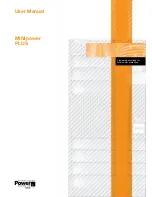
3
1. Introduction
The information provided in this manual covers single phase 1000 –
3000 VA,
uninterruptible power systems, their basic functions, operating procedures, and emergency
situations, also including information on how to ship, store, handle and install the equipment.
Only detailed requirements of the UPS units are described herein, and installation must be
carried out in accordance with this manual. Electrical installations must also carefully follow
local legislation and regulations. Only qualified personnel should conduct these installations
as failure to acknowledge electrical hazards could prove to be fatal.
2. System description
Several different kinds of sensitive electrical equipment stay protected by a UPS
(Uninterruptible Power System) including computers, workstations, process control systems,
telecommunications systems, sales terminals, other critical instrumentation, etc. The purpose
of the UPS is to protect these systems from poor quality utility power, complete loss of
power, or other associated problems.
Electrical interference abounds in many forms causing problems in AC power, from
lightning, power company accidents and radio transmissions to motors, air conditioners, and
vending machines, among others. So protection of sensitive electrical equipment is vital to
protect against power outages, low or high voltage, slow voltage fluctuations, frequency
variations, differential and common-mode noises, transients, etc.
In order to prevent power line problems reaching critical systems causing damage to
software, hardware and causing equipment to malfunction, the UPS helps by maintaining
constant voltage, isolating critical load output if needed, and cleaning the utility AC power.
2.1 General description
As a double conversion on-line UPS, it is able to supply uninterrupted, clean single-phase
power to your critical systems while keeping batteries charged continuously, regardless of
whether utility power fails or not.
In event that a power failure lasts longer than a UPS backup time, it will shut down avoiding
battery discharge, and as soon as voltage comes back, the UPS will automatically charge up
and start recharging the batteries.
As shown in fig.1 block diagram:
z
An input filter reduces transients on the mains
z
For maintaining full battery charge, AC-power is rectified and regulated in the rectifier
feeding power to the inverter and battery converter.
4
z
DC power is converted to AC in the inverter passing it on to the load.
z
Power is maintained from the battery during a power failure.
z
The converter increases voltage appropriately for the inverter.
Fig.1.
Block diagram
Efficiency Optimizer function
The Efficiency Optimizer function is a new feature for the UPS adding cost effectiveness,
minimizing power loss and reducing power consumption. Alternating between bypass and
on-line modes is achieved automatically and in accordance with the conditions of the utility
power. On-line mode may be used during times of intermittent power supply, and bypass
mode when power flows smoothly in order to obtain greatest efficiency. Irregularities can be
detected in less than a second, and on-line mode reactivated immediately. Switching back to
online mode occurs when input voltage is outside ±10% or nominal (±15% selectable), when
input frequency is outside of ±3Hz or when no input line is available.
Although high efficiency is standard, the default operation is in on-line mode. Bypass can be
activated in the LCD panel, though on-line can be run permanently if preferred.
Free Run Mode
The UPS operates in free run mode when input frequency is outside of the selected input
frequency range. Free run mode is when output frequency does not match input frequency.
When starting the UPS, the frequency regulation detected is 50 or 60 Hz ±0.25Hz. Please
refer to chapter 7.2 if you want bypass available while running in free run mode.
Diagnostic tests
When you start the UPS, a diagnostic test is automatically executed that checks electronics,
battery, and reports any problems on the LCD display.
An advanced battery management system always monitors the conditions of the batteries






































